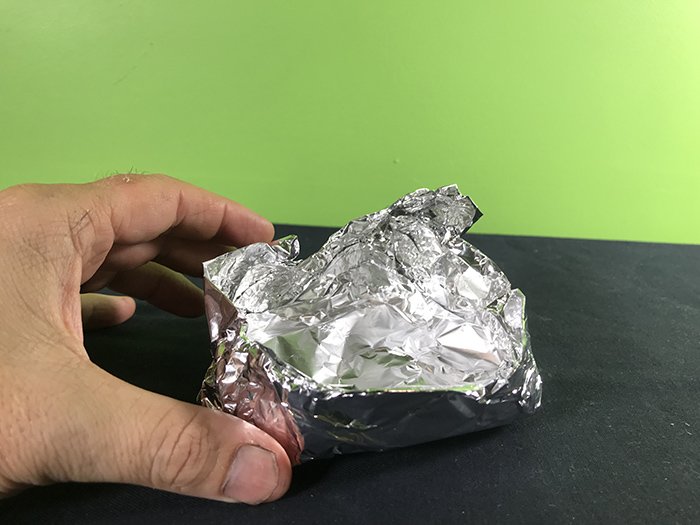You will need:
- Aluminium foil
- A tub of water
- Marbles, metal nuts or anything else you want to use as weights
- Optional: A scale to measure the weight
- A mess bucket and cleaning materials


School science visits since 2004!
– Curriculum-linked & award-winning incursions.
– Over 40 primary & high school programs to choose from.
– Designed by experienced educators.
– Over 2 million students reached.
– Face to face incursions & online programs available.
– Early learning centre visits too!
What is happening?
Things float in water due to displacement and the resultant forces that act back on the object. Displacement is simply an object pushing a liquid or gas out of the way. When you place an object into water, it displaces the water out of the way. That same water pushes back at the object.
- If the weight of the water that was displaced is more than the weight of the object, the object will float. This floating is due to the force of that water pushing upwards being greater than the force of the object pushing downwards.
- If the weight of the water displaced is less than the object’s weight, the object will sink. This floating is due to the force of that water pushing upwards being lesser than the force of the object pushing downwards.
This is about Archimedes principle which states:
“Any object, wholly or partially immersed in a fluid, is buoyed up by a force equal to the weight of the fluid displaced by the object.”
Variables to trial
- Can you reduce the amount of foil and still hold the same number of marbles?
- What happens if you use a liquid other than water?
- Does it matter where you place the weights within the boat?
- Discover more about forces in the forces, friction & movement school science visit!
Working with Water
Years K to 2
Maximum 30 students
School workshop (NSW & VIC)
60 or 90 minutes
Online Class Available
STEM Full Day Accelerator - Primary
Designed from real classroom experiences, this modular day helps you create consistently effective science learning that directly address the new curriculum with easily accessible and cost-effective materials.

































Comments